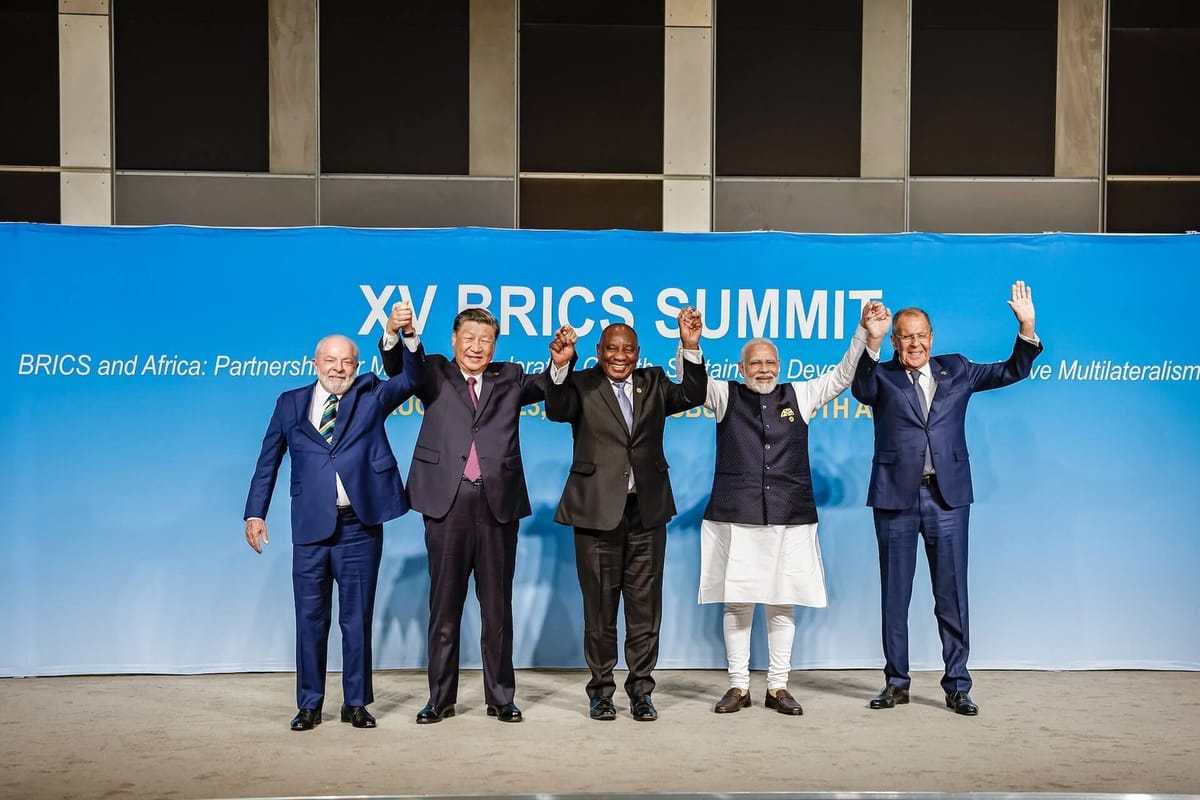

The 2025 BRICS Summit, the 17th edition of this significant gathering, convened the leading emerging economies to address key global challenges and advance South-South collaboration. Held in Rio de Janeiro, Brazil, on July 6–7, the summit was guided by the theme: “Enhancing Global South Solidarity for More Inclusive and Sustainable Governance.”
With the conclusion of the Summit, several new developments and policies have been discussed, with their implementation still in progress, which will mark a strategic shift towards inclusivity, expansion, and stronger South-South cooperation.
BRICS 2025 Attendees
Under Brazil's presidency, led by President Lula da Silva, the BRICS summit saw the participation of several prominent figures in the global geopolitical arena. Indian Prime Minister Narendra Modi and the Prime Minister of Egypt, Mostafa Madbouly, attended the summit in person, while Russian President Vladimir Putin joined virtually due to the ICC arrest warrant. Several Middle Eastern nations opted out of the summit, citing safety concerns arising from regional unrest. Whereas, China’s President Xi Jinping surprisingly also made it to the list of non-attendees.

New Members and Partners
The BRICS 2025 summit also marked a significant expansion of the group, welcoming new members and strategic partners to strengthen its global presence. Indonesia officially joined as a full member on January 6, 2025, becoming the first Southeast Asian nation to enter the bloc. Additionally, ten countries: Belarus, Bolivia, Cuba, Kazakhstan, Malaysia, Thailand, Uganda, Uzbekistan, Nigeria, and Vietnam were included as BRICS partner countries, allowing them to participate in future summits and ministerial-level engagements. This expansion was seen as a move to reinforce South–South cooperation and reshape the global governance structure.
Read More about the new additions to the BRICS group!
Key Features of the BRICS Summit 2025
1. Strengthening Multilateralism & Global Governance
The BRICS 2025 summit reaffirmed its commitment to sovereign equality, solidarity, and consensus-based cooperation. Leaders stressed the need for reforms in organisations like the UN Security Council, the IMF, and the World Bank to better represent developing nations. The bloc also backed Brazil’s and India’s demands for permanent UNSC seats, with support from China and Russia.
2. Economic & Financial Cooperation
One of the highlights of the Summit was the agreement for the increment in the use of local currencies and domestic payment systems for intra-BRICS trade, including support for the BRICS Pay platform, in order to counter the “dollar monopoly”.Leaders also called for meaningful adjustments to IMF quota structures and reforms in multilateral development bank governance to enhance the voice and influence of emerging economies.
3. Climate Finance & Environmental Action
The BRICS 2025 summit urged developed nations to deliver on their climate finance commitments to the Global South and endorsed Brazil’s “Tropical Forests Forever” initiative. Leaders strictly opposed discriminatory carbon-border taxes and reaffirmed their commitment to the Paris Agreement and UNFCCC goals, calling for scaled-up efforts in mitigation, adaptation, and financial support. However, the bloc maintained a vague stance on fossil fuels, drawing criticism from environmental groups for framing continued fossil fuel development as part of a “just energy transition.”
4. Peace and Security
The BRICS 2025 summit reaffirmed support for international law and UN Charter principles. Leaders condemned all forms of terrorism, including the April 22 Pahalgam attack, and called for global action against terrorism financing and safe havens. On the Middle East crisis, the bloc denounced strikes on Iran and Israeli actions in Gaza, urged respect for Lebanese sovereignty, backed a two-state solution, and demanded hostage releases.
Prime Minister Narendra Modi called for “an immediate cessation of violence and a return to dialogue,” reaffirming India’s support for peace and diplomacy.

US’s Retaliation
Trump has made it evidently clear in his statements that America clearly does not support the decision of the BRICS nations to use local currencies for trade.
He said, “Any Country aligning themselves with the Anti‑American policies of BRICS, will be charged an ADDITIONAL 10% Tariff. There will be no exceptions to this policy. Thank you for your attention to this matter!”
In response, Lula denied any such aspirations of anti-American policies. He stood his ground on the bloc's decision of de-dollarisation of the Global South.
In light of the public statement made by U.S. President Donald Trump on social media on the afternoon of Wednesday (9), it is important to highlight the following:
— Lula (@LulaOficial) July 9, 2025
Brazil is a sovereign nation with independent institutions and will not accept any form of tutelage.
The judicial…
Read President Lula's Response to Trump.
Read this article about Lula’s Response to Trump’s threat!
The Future of BRICS
India is also set to commence its presidency tenure in 2026, with its aspirations to reinvent the meaning of BRICS into “Building Resilience and Innovation for Cooperation and Sustainability.” This redefinition reflects India’s vision under its presidency, emphasising a people-centred approach with a focus on environmental responsibility, technological innovation, and global collaboration. It sets the tone for India’s leadership in the bloc through 2026, signalling a shift towards sustainable development and resilient, forward-looking partnerships.
